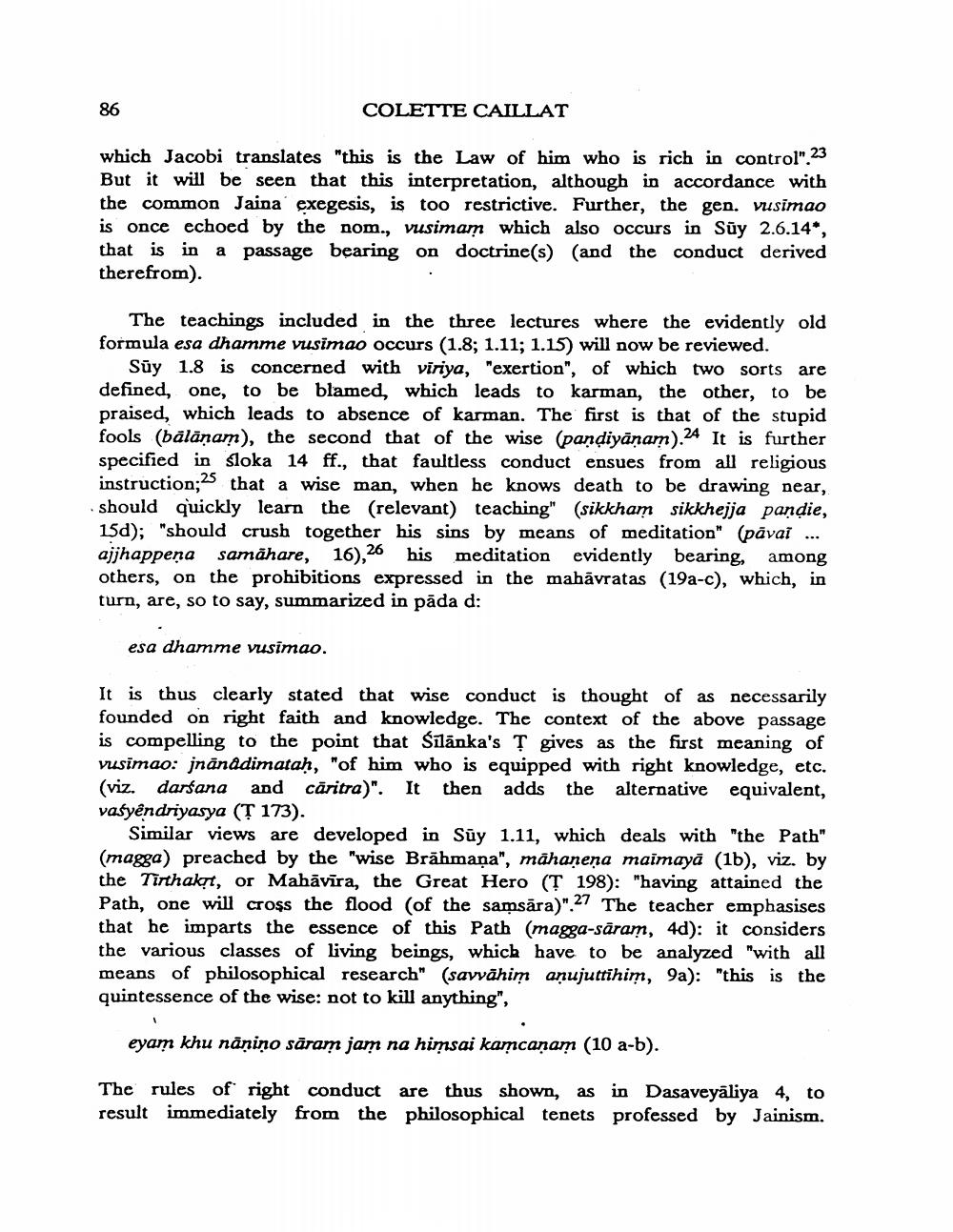________________
86
COLETTE CAILLAT
which Jacobi translates "this is the Law of him who is rich in control".23 But it will be seen that this interpretation, although in accordance with the common Jaina' exegesis, is too restrictive. Further, the gen. vusimao is once echoed by the nom., vusimam which also occurs in Sūy 2.6.14*, that is in a passage bearing on doctrine(s) (and the conduct derived therefrom).
The teachings included in the three lectures where the evidently old formula esa dhamme vusimao occurs (1.8; 1.11; 1.15) will now be reviewed.
Sūy 1.8 is concerned with viriya, "exertion", of which two sorts are defined, one, to be blamed, which leads to karman, the other, to be praised, which leads to absence of karman. The first is that of the stupid fools (bālānam), the second that of the wise (pandiyānam).24 It is further specified in sloka 14 ff., that faultless conduct ensues from all religious instruction;2s that a wise man, when he knows death to be drawing near, should quickly learn the (relevant) teaching" (sikkham sikkhejja pandie, 150); "should crush together his sins by means of meditation" (pavai ... ajjhappena samähare, 16),26 his meditation evidently bearing, among others, on the prohibitions expressed in the mahāvratas (19a-c), which, in turn, are, so to say, summarized in pāda d:
esa dhamme vusimao.
It is thus clearly stated that wise conduct is thought of as necessarily founded on right faith and knowledge. The context of the above passage is compelling to the point that Silānka's I gives as the first meaning of vusimao: jnänådimataḥ, "of him who is equipped with right knowledge, etc. (viz. darśana and caritra)". It then adds the alternative equivalent, vašyêndriyasya (T 173).
Similar views are developed in Sūy 1.11, which deals with "the Path" (magga) preached by the "wise Brāhmaṇa", mähanena maimaya (1b), viz. by the Tirthakrt, or Mahāvīra, the Great Hero (T 198): "having attained the Path, one will cross the flood (of the samsāra)". 27 The teacher emphasises that he imparts the essence of this Path (magga-säram, 4d): it considers the various classes of living beings, which have to be analyzed "with all means of philosophical research" (savvāhim aņujuttihim, 9a): "this is the quintessence of the wise: not to kill anything",
eyam khu nänino sāram jam na hiņsai kamcanam (10 a-b).
The rules of right conduct are thus shown, as in Dasaveyaliya 4, to result immediately from the philosophical tenets professed by Jainism.




